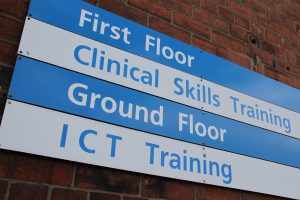By Sascha Giese, SolarWinds
Earlier this year, NHS England — the largest of the four public health providers in the UK — merged with NHS Digital to become the sole custodian of NHS data and technology.
The move is designed to bring responsibility for NHS data and technology expertise all under one roof to create a more streamlined and efficient organisation.
Those behind the merger maintain it’s an essential next phase in the NHS’ ongoing digital transformation. But in an organisation that is awash with data, one of the biggest headaches for those now in charge is how best to manage data safely and responsibly.
Automating tools are key
Clearly, automation plays a pivotal role in that data management. Without such tools, streamlined data collection — via the integration of various sources such as electronic health records and diagnostic equipment — would be impossible.
In fact, wherever you look, automated tools are critical to the processing and analysis of large volumes of data.
This includes rectifying inconsistencies, duplications, and errors to improve data quality — something that is crucial if clinicians want to identify trends, patterns, and insights that can inform clinical research and improve public health.
Continuing to address the need to replace outdated legacy systems
But this is just the start. For an organisation like the NHS — which celebrated its 75th anniversary this year – the issue of legacy systems is a constant reminder of its long heritage.
Systems that were once ‘cutting edge’ are now past their sell-by date but continue to underpin key services. 
There are plenty of reasons why legacy systems need to be replaced, such as obsolescence and higher running costs.
However, two issues — data sharing and providing real-time access to data — have gained extra traction recently, exposing the shortcomings of legacy systems with regard to artificial intelligence (AI) and machine learning (ML).
Investment into new technologies such as AI and ML
The UK government has made no secret of its eagerness to harness AI and ML in areas such as cancer, heart disease, diabetes, mental health, and neurological disorders.
But for this to happen, it needs ready access to good-quality data to train AI models. In one sense, that is good news for the NHS. The data already exists.
However, the issue of legacy means that a lot of that data is not necessarily primed for use by the latest AI tools. For example, data in legacy systems can be stored in a huge range of formats that are not necessarily compatible with each other.
Perhaps more important is the issue of security. Of course, any automation or AI project should be implemented carefully to ensure data security, privacy, and ethical considerations. However weaknesses in legacy environments can make it difficult to fully integrate them with modern systems.
These issues can be overcome. For example, the training phase of AI projects could be done ‘behind closed doors’ in offline networks before a full roll-out using real-time data to ensure that security has been properly implemented.
Simplifying compliance through SIEM tools
Another approach would be to leverage enterprise-wide security information and event management (SIEM) tools.
SIEM tools monitor threats round the clock by gathering logs from apps and systems — located across hybrid environments in a centralised location — and issuing immediate alerts when an issue is discovered.
This approach can also take pre-emptive steps to quarantine risk or shut down processes or devices without the need for manual intervention.
With so much going on, technical teams need to be able to see what’s happening across all platforms and systems. This can be achieved via observability, an approach that provides all-important valuable insights into the inner workings of complex systems.
Putting the right tools in place
Ultimately, the challenges facing the NHS touch on all these areas as it looks to manage and secure growing volumes of data in a more and more distributed IT landscape.
What’s clear is that throwing people at it won’t solve the problem. The NHS needs to put the right tools and processes in place to achieve the visibility required to stay ahead of cyber threats, fraud, and compliance requirements — efficiently, effectively, and at scale.
While automation offers numerous benefits, it should be implemented carefully to ensure the highest standards of security, privacy, and ethics.








Recent Comments